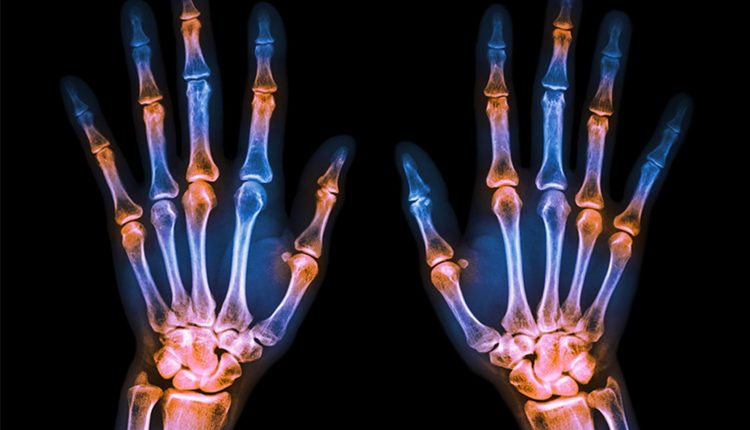
Rheumatoid arthritis: staging, course and treatment
Rheumatoid arthritis (RA) is a chronic, ankylosing and progressive inflammatory polyarthritis with autoimmune pathogenesis and unknown aetiology, mainly affecting the synovial joints
The status of rheumatoid arthritis can be identified by analysing the type of lesions on the patient:
Stage 1: An infiltrate of CD4+ lymphocytes and macrophages is present, symmetrical swellings are noted macroscopically, there is no redness, there are systemic symptoms and rheumatoid nodules. In the circulation there is an increase in inflammation indices and rheumatoid factor
Stage 2: There is inflammation and synovial and endothelial proliferation (neoangiogenesis and synovial cloth formation), the effusion is seen on ultrasound as hypoechogenic areas; in contrast, the hyperplastic areas are hyperechogenic. Bone erosion, cartilage resorption and tendon rupture are also present. The bone changes can be seen on radiography and even better on ultrasound. By this stage the synovial hyperplasia is irreversible.
Stage 3: Bone deformations, dislocations and fibrosis are evident.
The course is very varied and generally characterised by phases of exacerbation and remission.
There are milder forms that respond well to therapy and severe forms that progress without remission phases, leading to severe pictures of ankylosis and functional impotence; in many cases, the disease is serious not because it is life-threatening but because, by preventing the proper use of the limbs and especially the hands, it is very disabling.
Those affected may find it difficult not only to work but also to care for themselves.
The most unfavourable prognostic factors include high FR titres, the presence of nodules or vasculitic damage, and poor response to therapy.
Treatments of Rheumatoid Arthritis
The treatment of Rheumatoid Arthritis is based on the use of immunosuppressants, such as methotrexate or leflunomide; hydroxychloroquine, cyclosporine, sulfasalazine may also be used in special cases.
The use of cortisone in cycles is also envisaged in phases of increased disease activity, e.g. at onset or in flares, to achieve a more rapid clinical response, and of NSAIDs for pain control.
In cases unresponsive to immunosuppressants or in patients with particularly aggressive disease, it is possible to use biological drugs, monoclonal antibodies or receptors that block inflammation molecules (e.g. anti-TNFalpha, anti-IL6, anti-IL1) or inflammation cells such as B lymphocytes (anti-CD20) and T lymphocytes (CTLA4).
Read Also:
Emergency Live Even More…Live: Download The New Free App Of Your Newspaper For IOS And Android
Fibromyalgia: The Importance Of A Diagnosis
Rheumatic Diseases: Arthritis And Arthrosis, What Are The Differences?
Rheumatoid Arthritis: Symptoms, Diagnosis And Treatment
Joint Pain: Rheumatoid Arthritis Or Arthrosis?
Pain In Rheumatologic Diseases: Manifestations And Treatment
Rheumatic Fever: Causes, Symptoms, Diagnosis, Treatment, Complications, Prognosis



